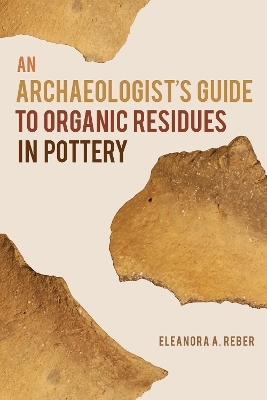
An Archaeologist's Guide to Organic Residues in Pottery
Seiten
2022
The University of Alabama Press (Verlag)
978-0-8173-2122-2 (ISBN)
The University of Alabama Press (Verlag)
978-0-8173-2122-2 (ISBN)
Pottery analysis is a crucial component of excavating an archaeological site. Organic residues in pottery are made up of chemicals that absorb into pots over their lifetime. This book is a guide for mastering the technical specialty of organic residue analysis of pottery.
A guide for mastering the technical specialty of organic residue analysis of pottery
Pottery analysis is a crucial component of excavating an archaeological site. Organic residues in pottery are made up of chemicals that absorb into pots over their lifetime. These residues can reveal what people ate, whether different types of vessels were used for different cooking or foodstuffs preparation, and whether “elite” vessels were in use.
Organic residue analysis is a technical specialty that blends an unusual type of instrumental organic chemistry and archaeology. Because it is considered an obscure technique, archaeologists of all degrees of experience tend to struggle with how to apply the technology to archaeological questions and how to sample effectively in the field to answer these questions.
Eleanora A. Reber’s An Archaeologist’s Guide to Organic Residues in Pottery is a user-friendly resource for all archaeologists. It offers a case study approach to explain the methods and application of organic residue analysis. The case studies, gleaned from Reber’s more than twenty years of archaeological research, cover the range of residues encountered in the field.
The case studies detail useful aspects of residue analysis, such as compound-specific isotope analysis for the identification of traces of maize and marine resources, conifer resins, and the psychoactive alkaloid biomarkers caffeine and nicotine. Special attention is paid to sampling and construction of meaning as well as research questions to help field archaeologists integrate residue analysis seamlessly into their projects.
A guide for mastering the technical specialty of organic residue analysis of pottery
Pottery analysis is a crucial component of excavating an archaeological site. Organic residues in pottery are made up of chemicals that absorb into pots over their lifetime. These residues can reveal what people ate, whether different types of vessels were used for different cooking or foodstuffs preparation, and whether “elite” vessels were in use.
Organic residue analysis is a technical specialty that blends an unusual type of instrumental organic chemistry and archaeology. Because it is considered an obscure technique, archaeologists of all degrees of experience tend to struggle with how to apply the technology to archaeological questions and how to sample effectively in the field to answer these questions.
Eleanora A. Reber’s An Archaeologist’s Guide to Organic Residues in Pottery is a user-friendly resource for all archaeologists. It offers a case study approach to explain the methods and application of organic residue analysis. The case studies, gleaned from Reber’s more than twenty years of archaeological research, cover the range of residues encountered in the field.
The case studies detail useful aspects of residue analysis, such as compound-specific isotope analysis for the identification of traces of maize and marine resources, conifer resins, and the psychoactive alkaloid biomarkers caffeine and nicotine. Special attention is paid to sampling and construction of meaning as well as research questions to help field archaeologists integrate residue analysis seamlessly into their projects.
Eleanora A. Reber is professor of anthropology at the University of North Carolina Wilmington.
| Erscheinungsdatum | 10.06.2022 |
|---|---|
| Reihe/Serie | Archaeology of Food |
| Zusatzinfo | 52 b&w figures, 11 tables |
| Verlagsort | Alabama |
| Sprache | englisch |
| Maße | 160 x 231 mm |
| Gewicht | 211 g |
| Themenwelt | Geisteswissenschaften ► Archäologie |
| ISBN-10 | 0-8173-2122-5 / 0817321225 |
| ISBN-13 | 978-0-8173-2122-2 / 9780817321222 |
| Zustand | Neuware |
| Informationen gemäß Produktsicherheitsverordnung (GPSR) | |
| Haben Sie eine Frage zum Produkt? |
Mehr entdecken
aus dem Bereich
aus dem Bereich
maternal health science and the reproduction of harm
Buch | Softcover (2024)
University of California Press (Verlag)
37,40 €
Holocaust heritage, noncitizen futures, and black power in Berlin
Buch | Softcover (2022)
University of California Press (Verlag)
37,40 €


